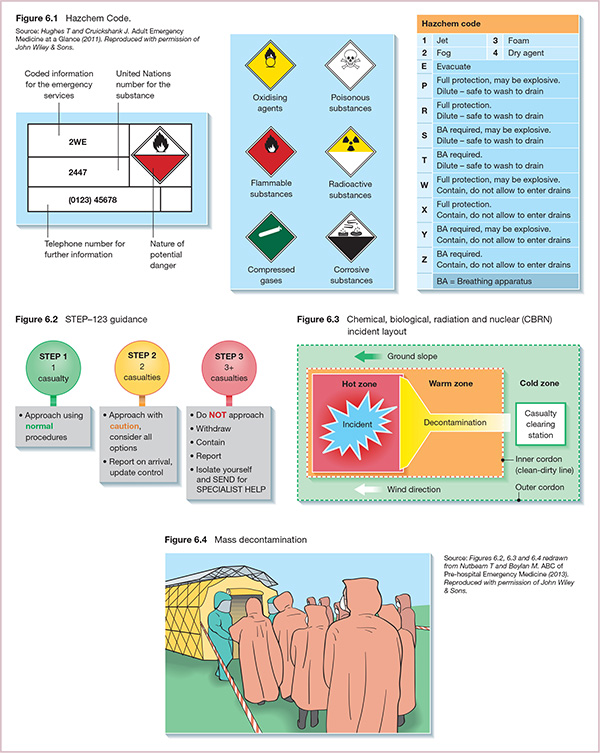6 Hazardous materials are used primarily in industry and research although there is increasing concern over their use in terrorist activities. Exposure to such chemical, biological, radiological and nuclear (CBRN) substances can result in challenging, large-scale medical emergencies. Incidents such as these are within the remit of HARTs, although all responding teams must work together to ensure effective management. Events involving hazardous materials should be approached using an Incident Command System (ICS). The ICS provides a framework to ensure that each responder is informed of their own roles and responsibilities within the operation and contains protocols that are to be followed to coordinate the different teams involved. No pre-hospital care practitioner should approach the CBRN event until after assessment by a HART or other specialist team, for the nature of the toxidrome is seldom initially clear unless a Hazchem code is displayed (Figure 6.1). When on scene, pre-hospital care practitioners should always use the Safety Triggers for Emergency Personnel (STEP) 1-2-3 to guide their approach (Figure 6.2). There are several difficulties unique to CBRN events which rescuers should bear in mind when assessing the scene (Figure 6.3). CBRN threats may not be easily identifiable by sight, smell or otherwise. Responders should have a low threshold of suspicion for such threats on encountering unusual clinical presentations in multiple patients or after witnessed exposure to unknown chemicals. If exposure is suspected, personnel should not proceed and should remain upwind and uphill of the threat. Defining and containing the scene may be difficult, e.g.
Hazardous materials

Scene management
Approaching the scene

Full access? Get Clinical Tree








